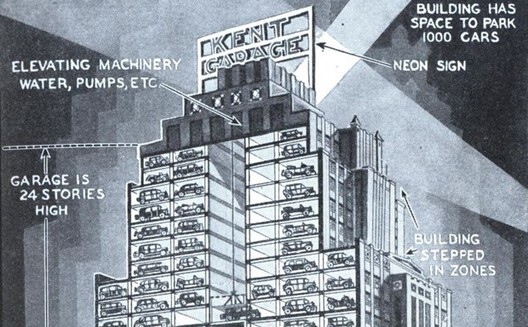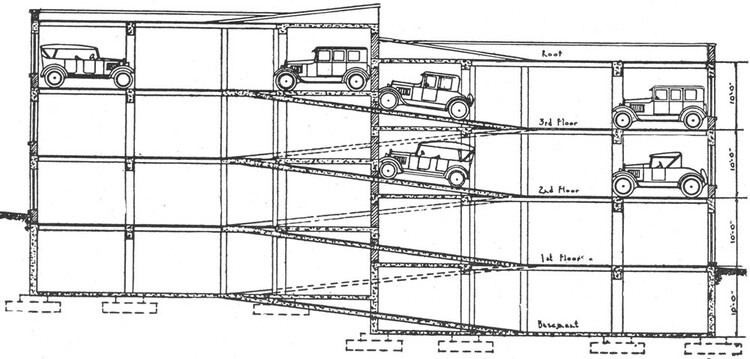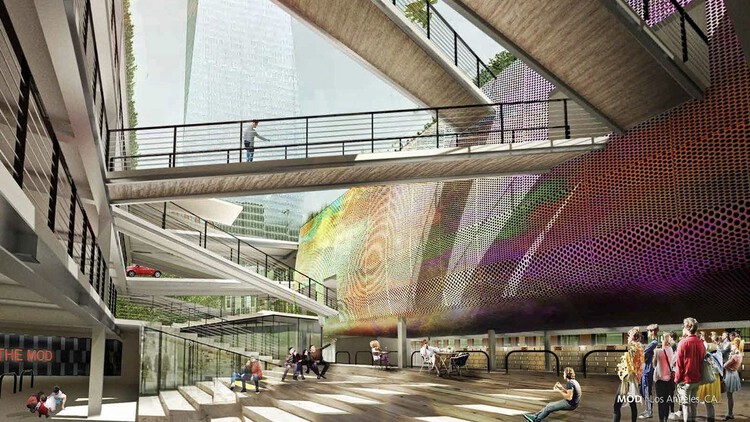The Evolution and Prospects of Parking Garage Architecture
The need to find a place for every car on the road raises the question of whether parking garages are the solution. However, these structures are often seen as unsightly and counter to people-friendly urban planning. They dominate the aesthetic of business districts, turning them into parking districts. Parking codes exacerbate the problem, mandating a minimum number of parking spaces even in suburban areas. Parking garages have become ubiquitous, surrounding malls, connecting to residential towers, and surrounding sporting venues.

© Modern Mechanix
The origin of parking garages can be traced back to the turn of the 20th century when carriage houses were repurposed to store cars. Early designs featured pulley systems that hoisted cars up to stacked towers to save space, while others resembled typical Art Deco office buildings. Parking garages evolved over time, featuring ramps and open decks where cars are packed tightly together.
Today, architects are trying to design more aesthetically pleasing garages by cladding them in colorful materials and lighting systems. However, they remain a financial burden, with the cost of construction ranging from $21,000 in less dense cities to $33,000 in dense cities such as New York City. Many cities are also implementing strategies to go car-free in the future, leading to the question of what purpose parking garages will serve in 20 or 50 years. Despite this uncertainty, there is hope that new parking garages will look better, even if their long-term purpose remains questionable.

© Modern Mechanix
One example of a transformed parking garage is the Santa Monica Civic Center Parking Garage in California. This structure, which used to be a mundane parking garage, has been reimagined as an art museum, housing galleries and public art installations. Other cities are following suit, attempting to repurpose parking garages for community spaces or converting them into residential or office spaces.
However, while transforming existing parking garages may be a viable solution, the issue of building new parking garages still remains. In cities where land is scarce and expensive, constructing new parking garages only exacerbates the problem. Instead, urban planners are now focusing on promoting public transportation, encouraging walking and biking, and building denser, mixed-use developments that reduce the need for cars altogether.

© Gensler via LA Times
Another issue with parking garages is their impact on the environment. According to a report by the National Renewable Energy Laboratory, transportation accounts for over 25% of greenhouse gas emissions in the US. Parking garages contribute to this problem by encouraging car usage and taking up valuable space that could be used for green infrastructure such as parks or community gardens.
Overall, while parking garages may have served a purpose in the past, they are increasingly becoming obsolete in today’s world. As cities continue to grow and space becomes more valuable, urban planners will need to find creative solutions to reduce the need for cars and repurpose existing parking garages for more community-friendly uses.
The origins of parking garages can be traced back to the turn of the 20th century when carriage houses were converted to store cars. As cars became more widely available, the need for dedicated parking structures grew. Early designs featured pulley systems and art deco architecture, blending in with their surroundings so as not to detract from the aesthetic of the urban landscape. However, as building codes mandated the provision of parking spaces, the number of parking garages increased, and the design became more utilitarian, resembling the open-deck structures we are familiar with today.
While parking garages are a necessary solution to the problem of where to store cars, they have become a source of contention in urban planning circles. In dense cities like New York, the cost of constructing parking garages is prohibitive, with each space costing nearly $33,000. Moreover, as more cities plan to go car-free in the future, the long-term purpose of parking garages is questionable. Despite these challenges, architects are experimenting with ways to make parking garages more aesthetically pleasing, and some are exploring the possibility of repurposing them as residential areas, community centers, or offices.
As cities continue to evolve, parking garages will undoubtedly play a role in shaping the urban landscape. Whether they remain a necessary evil or become a relic of the past, the history of parking garages provides insight into the evolution of urban planning and the challenges of accommodating a growing population and their vehicles.
